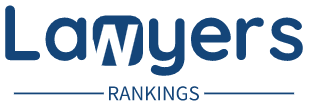Living in a rental property comes with certain rights and responsibilities for both tenants and landlords. One of the pressing issues that tenants may face is the presence of mold in their rental unit. Mold can pose serious health risks and can lead to the need for tenant relocation. In this article, we will explore the rights and responsibilities of tenants and landlords when it comes to dealing with mold in rental properties.
What are the rights of a tenant when dealing with mold in rental properties?
What actions can a tenant take if they discover mold in their rental property?
If a tenant discovers mold in their rental property, it is essential to take immediate actions to ensure their health and safety. The first step is to inform the landlord about the mold problem in writing and request mold remediation. In most cases, the landlord must act promptly to address the issue and perform mold removal. If the landlord fails to take action within a reasonable timeframe, the tenant may have the right to terminate the lease agreement or, in some cases, withhold rent until the problem is resolved.
Are there any state or local laws that protect tenants from mold in rental properties?
State and local laws concerning mold in rental properties may vary. Some jurisdictions have specific regulations in place to protect tenants from mold exposure. These laws may outline the responsibilities of landlords in terms of preventing and addressing mold issues. Tenants should familiarize themselves with the relevant laws in their area to understand their rights and ensure that landlords are complying with their obligations.
Who is responsible for the cost of mold remediation in a rental property?
The responsibility for the cost of mold remediation in a rental property typically falls on the landlord. It is the landlord’s duty to maintain the property in a habitable condition, which includes addressing mold problems. However, in situations where the tenant’s actions or negligence contribute to the mold growth, such as failing to promptly report water leaks or properly ventilate the property, the tenant may be held partially responsible for the cost of remediation.
What are the responsibilities of a landlord when it comes to mold in a rental property?
What actions must a landlord take if a tenant reports a mold problem?
When a tenant reports a mold problem, the landlord must take immediate action to investigate and address the issue. The landlord should arrange for a professional mold inspection to assess the extent of the mold infestation. Once the presence of mold is confirmed, the landlord must promptly initiate mold remediation to remove the mold and prevent further spread.
Is a landlord liable for any health issues caused by mold in a rental property?
Landlord liability for health issues caused by mold in a rental property may vary depending on the circumstances. In general, if the landlord knew or should have known about the mold problem and failed to take action, they may be held liable for any resulting health issues. However, it is essential for tenants to establish a direct link between the mold exposure and their health problems through medical documentation and expert opinions.
What are the steps a landlord should follow to properly remove mold from a rental property?
Proper mold removal requires following specific steps to ensure the complete eradication of mold and prevent its reoccurrence. The specific process may vary depending on the severity of the mold infestation, but generally, it involves:
- Identifying the source of moisture and correcting any leaks or water issues.
- Isolating the affected area to prevent the spread of mold spores.
- Using appropriate personal protective equipment (PPE) during the remediation process.
- Removing or cleaning mold-infested materials depending on the extent of contamination.
- Applying appropriate antimicrobial treatments to prevent future mold growth.
- Ensuring proper ventilation and drying of the remediated area.
- Conducting a final inspection to verify the successful remediation of the mold problem.
How can a tenant prevent mold growth in their rental property?
What are some preventive measures a tenant can take to avoid mold?
Tenants can take certain preventive measures to minimize the risk of mold growth in their rental property. These measures include:
- Regularly cleaning and properly maintaining the property, including promptly reporting any water leaks or plumbing issues to the landlord.
- Promoting proper ventilation by using exhaust fans in bathrooms and kitchens and allowing air circulation by keeping doors and windows open whenever possible.
- Reducing indoor humidity levels by using dehumidifiers or air conditioners and promptly addressing any signs of condensation or moisture buildup.
- Avoiding the use of carpets in areas prone to moisture, such as bathrooms or basements, and using mold-resistant materials when possible.
- Removing any visible mold growth immediately using appropriate cleaning methods and following safety guidelines to protect against exposure.
Is it the tenant’s responsibility to regularly clean and maintain the rental property to prevent mold?
While it is the landlord’s responsibility to ensure the property is in a habitable condition, tenants also have a role in maintaining cleanliness and preventing mold growth. Tenants should perform regular cleaning activities, promptly report any maintenance issues to the landlord, and take appropriate actions to prevent excessive moisture or condensation in the property. By taking these measures, tenants can contribute to a healthier living environment and reduce the risk of mold growth.
Are there any products or tools that tenants can use to prevent mold growth in their rental property?
There are various products and tools available that can help tenants in preventing mold growth in their rental property. These include:
- Mold-resistant paints and coatings that can be applied to walls and other surfaces to provide an added layer of protection against mold.
- Mold inhibitors and moisture absorbers that can be placed in closets, cabinets, or other areas prone to mold growth.
- Air purifiers and dehumidifiers that help maintain proper air quality and humidity levels in the property.
- Mold testing kits that allow tenants to monitor the presence of mold spores in their surroundings.
What are the potential health risks associated with mold in a rental property?
What are the symptoms of mold exposure and how can tenants identify them?
Mold exposure can lead to a range of health issues, and the symptoms may vary depending on the individual and the extent of the exposure. Common symptoms of mold exposure include:
- Respiratory problems, such as coughing, wheezing, and shortness of breath.
- Allergic reactions, such as sneezing, runny nose, and itchy or watery eyes.
- Skin irritations, including rashes, redness, or itching.
- Headaches, fatigue, and difficulty concentrating.
- Exacerbation of asthma symptoms in individuals with pre-existing asthma.
Tenants can identify these symptoms by paying attention to any changes in their health that coincide with spending time in the rental property. It is important to consult a healthcare professional for a proper diagnosis and to determine if mold exposure is the cause of the symptoms.
What are the long-term health effects of living in a mold-infested rental property?
Living in a mold-infested rental property can have long-term health effects, particularly for individuals who are more susceptible to mold-related health issues. Prolonged exposure to mold can lead to chronic respiratory problems, allergies, and even more severe conditions in some cases. It is crucial to address mold problems promptly to prevent the development of long-term health complications.
Are there any specific groups of people who are more susceptible to health issues caused by mold?
Some individuals may be more susceptible to health issues caused by mold exposure. These include:
- Individuals with pre-existing respiratory conditions, such as asthma or allergies.
- Children, elderly individuals, and individuals with weakened immune systems.
- People with compromised respiratory or cardiovascular systems.
- Individuals with certain medical conditions or undergoing medical treatments that may make them more vulnerable to the effects of mold.
It is important for individuals in these groups to take extra precautions and seek medical advice if they suspect mold exposure.
What are the obligations of both the landlord and the tenant during the relocation process due to mold?
Who is responsible for finding alternative accommodation during the mold remediation process?
During the mold remediation process, both the landlord and the tenant have certain responsibilities. Typically, it is the landlord’s responsibility to provide alternative accommodation for the tenant while the property is undergoing mold remediation. The landlord should ensure that the temporary accommodation is comparable to the rental property and cover any additional costs associated with the relocation.
Can a tenant terminate their lease agreement if the landlord fails to address the mold issue?
If the landlord fails to address the mold issue within a If the landlord does not take appropriate measures to resolve the mold problem within a specified timeframe, If the landlord neglects to rectify the mold concern within a stipulated period of time,



